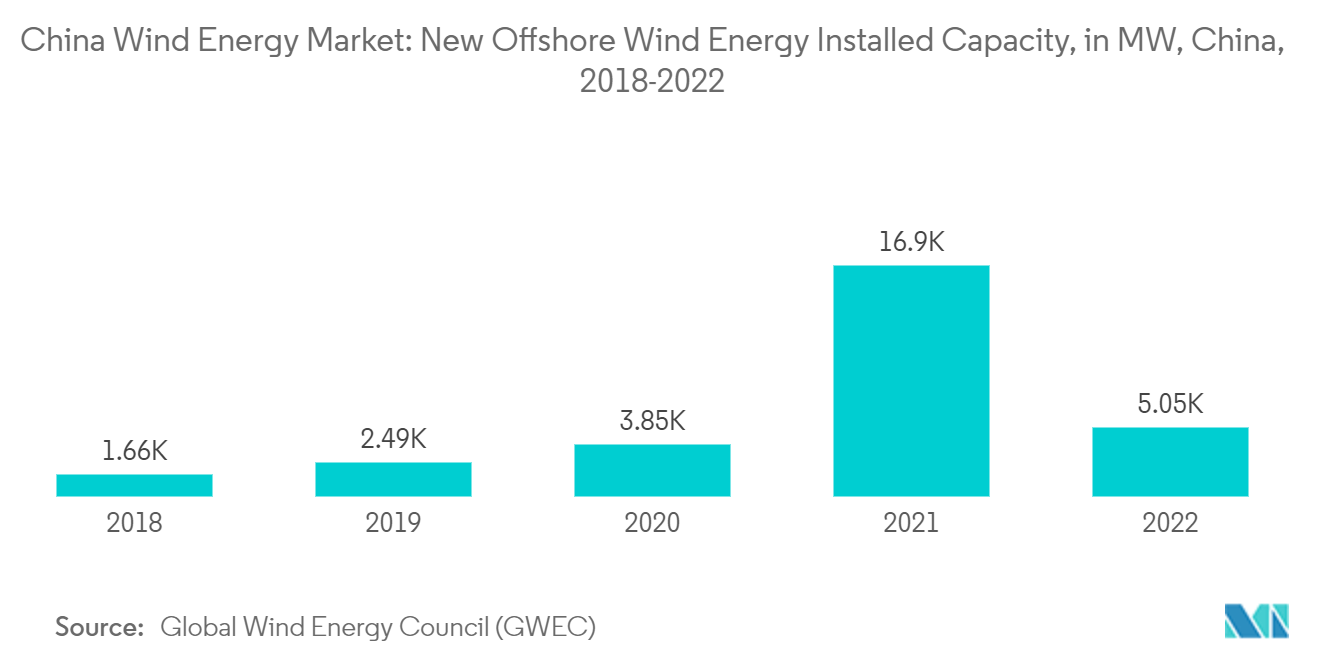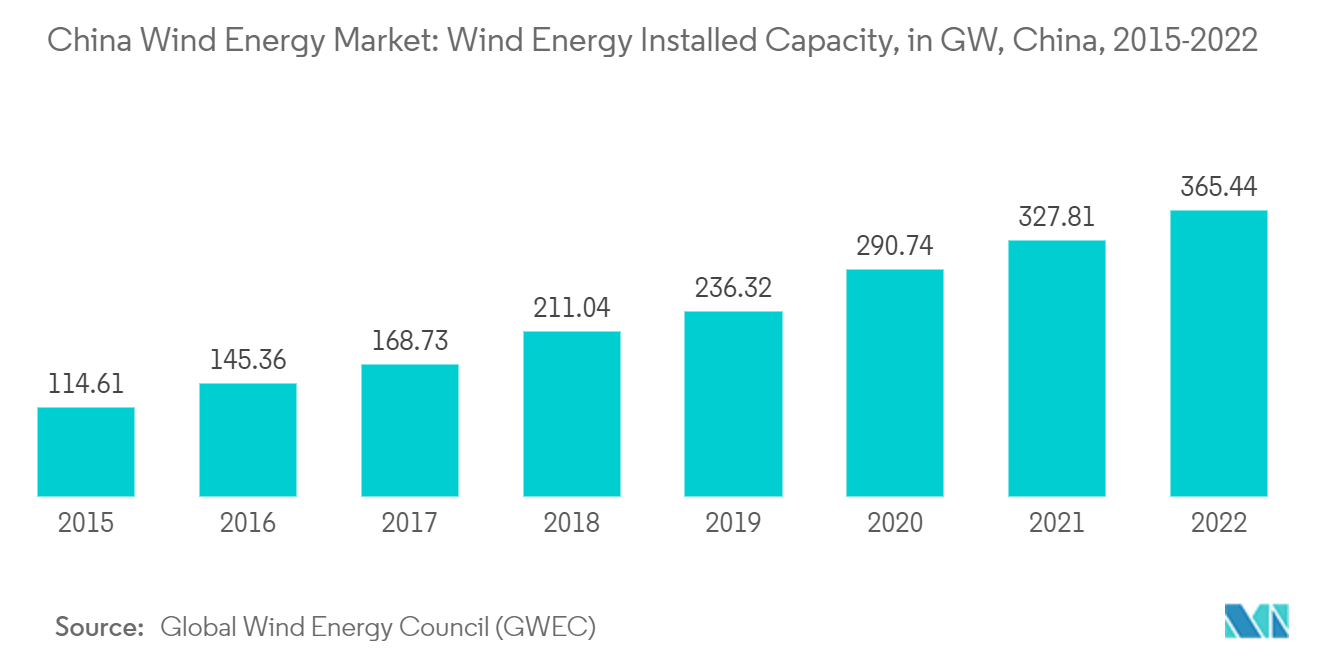Market Trends of China Wind Energy Industry
Offshore Segment Expected to Witness Significant Growth
- Offshore wind energy power generation technology evolved over the last five years to maximize the electricity produced per megawatt capacity installed to cover more sites with lower wind speeds. In recent years, wind turbines have become more extensive, with taller hub heights, broader diameters, and larger wind turbine blades.
- With a coastline of approximately 18,000 km, China has more than 1,000 GW of technical potential for offshore wind at a hub height of 90 meters. China has no long-term national offshore wind target, but coastal provinces have set ambitious official targets.
- In 2022, new offshore wind power capacity increased significantly globally, owing to China's rapid expansion, reshaping the offshore wind sector. China alone has installed nearly 5.05 GW of new offshore wind capacity of 8.77 GW of total new added capacity globally.
- According to the Global Wind Energy Council (GWEC), China is expected to host more than a fifth of the world's offshore wind turbines, equating to approximately 52 GW of offshore wind by 2030.
- China's expansion in 2022 alone accounted for approximately 48% of the total 64.3 GW of offshore wind power installed globally. In 2022, the country installed 5.05 GW of offshore wind capacity, accounting for more than 57% of the total installation. The Chinese manufacturers are poised to break out of the domestic market and compete with their European rivals for worldwide sales. Through a similar process, China overtook the global solar panel industry.
- In May 2022, China deployed its largest floating wind turbine as part of a project designed to advance the technology and demonstrate the capabilities of floating wind power generation known as Fuyao. The floating platform was towed from Maoming in Southern China into a position more than seven miles offshore in the South China Sea.
- Therefore, offshore wind energy is expected to grow the fastest in the coming years, with additional investments in the segment.

Rising Demand for Renewable Energy Expected to Drive the Market
- China is the largest energy consumer and renewable energy market globally, and the country is rapidly expanding its renewable energy capacity to satiate its domestic energy demand. As the country has been suffering from air pollution caused primarily by fossil-fuel-fired power plant emissions, it has focused on expanding its renewable energy capacity to meet its growing energy demands while reducing overall emissions.
- As part of its 14th five-year plan (2021-2025), the country aims to supply 33% of national power consumption by 2025 and 18% of non-hydro renewables. The country aims to increase renewable energy generation to 3,300 TWh by 2030.
- In its latest updated Nationally Determined Contributions (NDC), China has committed to reaching peak emissions by 2030 and achieving carbon neutrality as part of its commitments made under the Paris Agreement. In terms of energy targets, the country aims to cut C02 emissions per unit of GDP by more than 65% from 2005 levels and increase the total installed wind plus solar capacity to 1,200 GW.
- According to CarbonBrief, based on the rapid growth of the renewable energy industry in the country, it is estimated that China will reach its target of 1,200 GW of wind+solar deployment significantly ahead of its 2030 deadline. Such rapid growth in the installed wind energy capacity is due to the rising demand created as a result of environmental commitments, and the rising domestic energy consumption is expected to drive the wind energy market during the forecast period.
- China's provinces have set up individual targets for renewable energy projects as a part of national targets. The largest targets have been set up by the northwestern provinces of Inner Mongolia and Gansu to leverage the presence of large tracts of uninhabited desert lands. These two provinces plan to add a cumulative 190 GW of wind and solar projects by 2025, in addition to the 74 GW of installed capacity as of May 2022. These provinces are followed by Shaanxi, Hebei, and Shandong, which have planned to install 190 GW of new solar and wind capacity additions during 2021-2025.
- According to GWEC, in 2022, the total wind installed capacity increased by 11.5% compared to the previous year in China. The total wind energy installed capacity accounted for about 365.44 GW.
- Coastal provinces in China have been focused on developing new offshore wind capacity. Guangdong aims to install 18 GW of offshore capacity by 2025, while Fujian, Zhejiang, and Jiangsu aim to install 13.3GW, 6GW, and 9GW of offshore wind power projects by 2025, respectively.
- Shandong aims to add 35 GW of offshore wind power capacity by 2030 while starting the construction of 10 GW of projects and adding 5 GW to the grid by 2025. The island province of Hainan has been permitted by the National Energy Administration (NEA) to build 12.3 GW of offshore wind by 2025.
- Thus, the growing investment from the state-owned companies and favorable government policies in wind energy generation are expected to drive the growth of the Chinese wind energy market during the forecast period.

